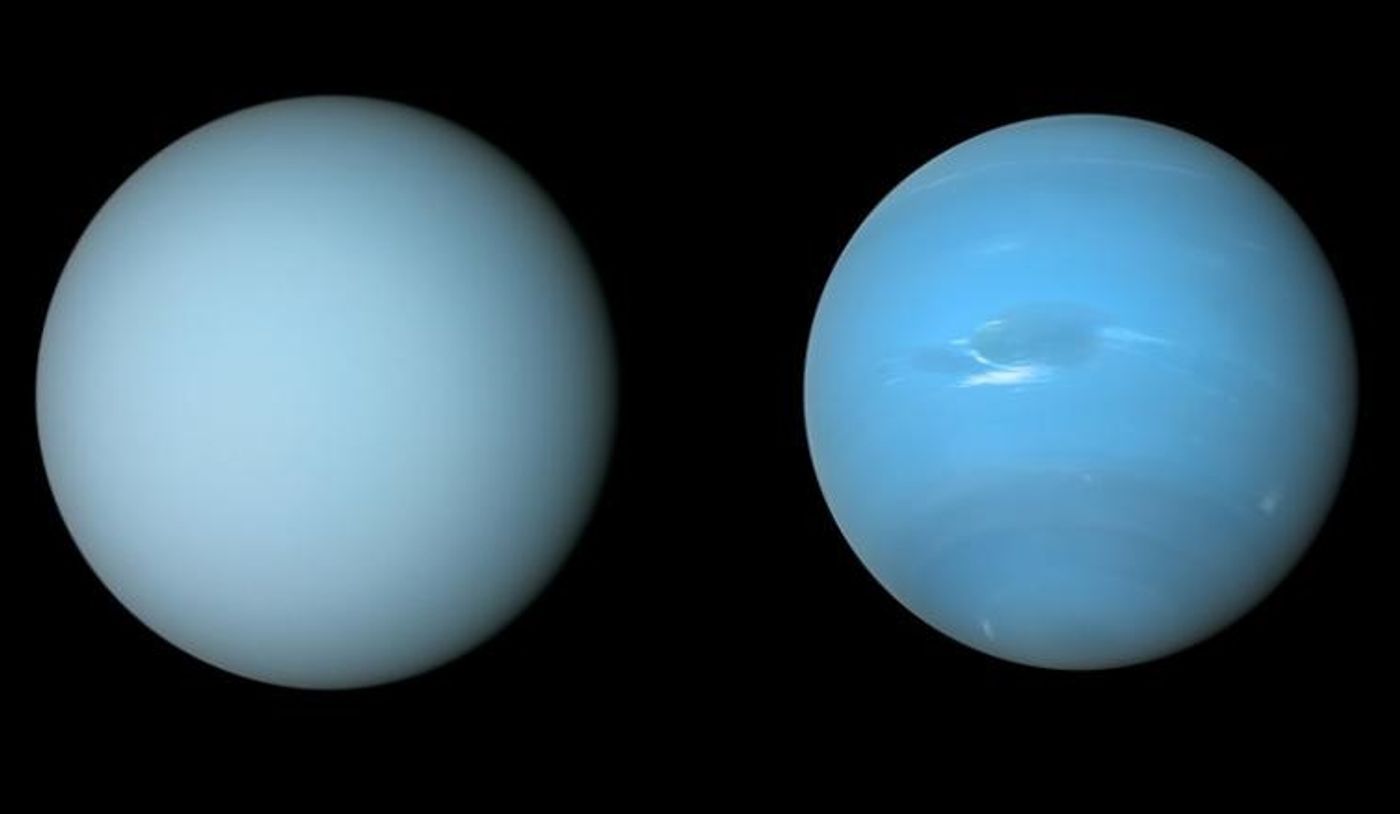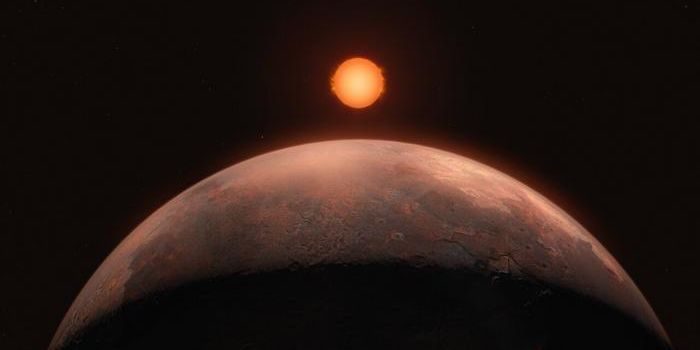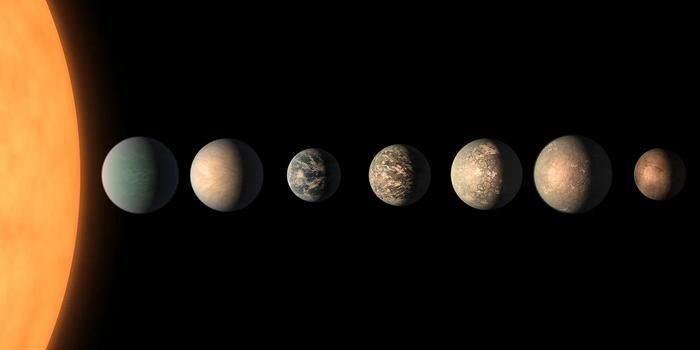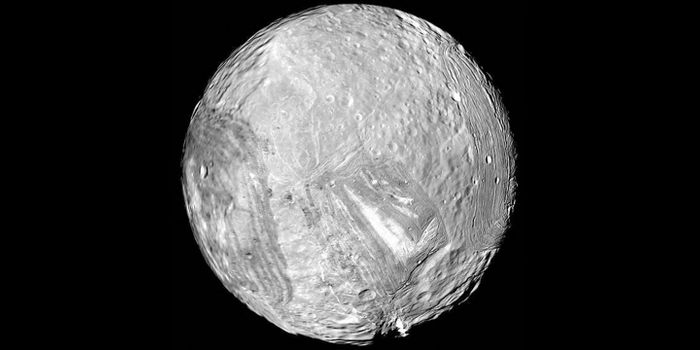Why Uranus and Neptune Are Different Colors
The planets Uranus and Neptune are possibly the least explored planetary objects in our solar system. Due to their incredible distances from Earth, the only spacecraft to have visited these awesome worlds is Voyager 2 in the 1980s. While this pioneering spacecraft send back treasure troves of data about both planets and their family of moons, we haven’t gone back, primarily due to the aforementioned vast distance and time it would take to get to either planet. Despite this lack of up-close exploration, we’re still fascinated by these worlds. They’re just hanging out in the depths of our solar system begging to be studied and explored. Like most gas giants, Uranus and Neptune are primarily made of hydrogen and helium, and they’re almost the same size (Neptune is 17 times the mass of the Earth while Uranus is 15 times as big), but how and why are they different colors? Thanks to the awesomeness of science, we might finally have the answer.
In a recent study published in the Journal of Geophysical Research: Planets, astronomers may now understand why the similar planets Uranus and Neptune are different colors. Using observations from the Gemini North telescope, the NASA Infrared Telescope Facility, and the Hubble Space Telescope, researchers have developed a single atmospheric model that matches observations of both planets. The model reveals that excess haze on Uranus builds up in the planet's stagnant, sluggish atmosphere and makes it appear a lighter tone than Neptune. The study suggests that a layer of concentrated haze that exists on both planets is thicker on Uranus than a similar layer on Neptune and 'whitens' Uranus's appearance more than Neptune's. If there were no haze in the atmospheres of Neptune and Uranus, both would appear almost equally blue.
This conclusion comes from a model that an international team led by Patrick Irwin, Professor of Planetary Physics at Oxford University, developed to describe aerosol layers in the atmospheres of Neptune and Uranus. Previous investigations of these planets' upper atmospheres had focused on the appearance of the atmosphere at only specific wavelengths. However, this new model, consisting of multiple atmospheric layers, matches observations from both planets across a wide range of wavelengths. The new model also includes haze particles within deeper layers that had previously been thought to contain only clouds of methane and hydrogen sulfide ices.
"This is the first model to simultaneously fit observations of reflected sunlight from ultraviolet to near-infrared wavelengths," explained Irwin, who is the lead author of the study. "It's also the first to explain the difference in visible color between Uranus and Neptune."
The model also helps explain the dark spots that are occasionally visible on Neptune and less commonly detected on Uranus. While astronomers were already aware of the presence of dark spots in the atmospheres of both planets, they didn't know which aerosol layer was causing these dark spots or why the aerosols at those layers were less reflective. The team's research sheds light on these questions by showing that a darkening of the deepest layer of their model would produce dark spots similar to those seen on Neptune and perhaps Uranus.
What new discoveries will we make about these fantastic worlds hanging out in the depths of our solar system? Only time will tell, and this is why we science!
As always, keep doing science & keep looking up!
Sources: NASA Solar System Exploration, University of Oregon, Journal of Geophysical Research: Planets









